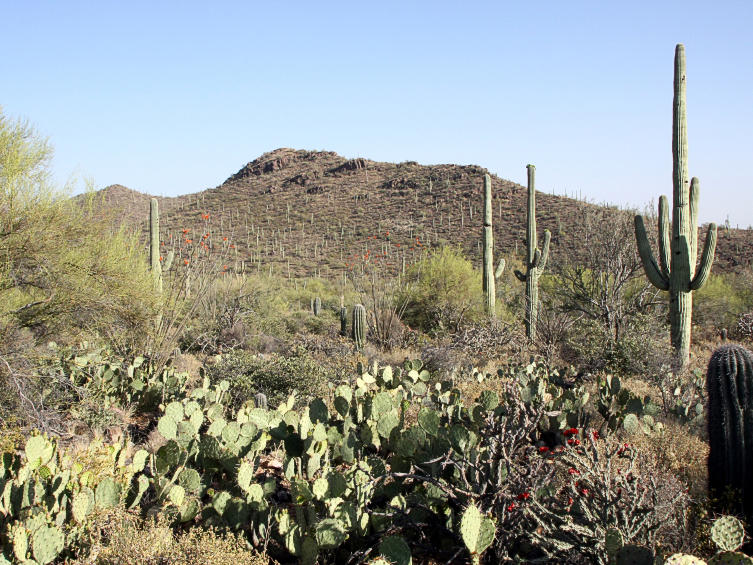
The Glorious Sonoran
The Southwest’s desert wonderland is at last getting the attention it deserves. Hike, drive, enjoy it now

West's amazing places: Northwest Sonoran Desert, Arizona
The Sonoran desert dawn announces its arrival with the sound of a thousand stirrings. It breaks a silence so complete that you might think nothing short of a sonic boom could dent it. Sure, coyotes howled during the night, their yips and yowls bouncing off the mountains and across the valley. Owls screeched and bats fluttered above our campsite in the Table Top Wilderness Area in south-central Arizona, about 20 miles off U.S. 8. But the silence of the night always closed back in, reinforcing the illusion of emptiness common to deserts. The rising sun, still beneath the horizon, begins to light the morning, gradually repainting the sky shade-by-shade and minute by minute: from gray to pink to violet on its way to a cloudless mid-day blue.
The breeze picks up almost imperceptively, cool at first then mixing with the warmth of the afternoon to come. A caress of a wind. It carries with it a hint of moisture from the light dew that settled, seemingly incongruously, over the desert during the night. The wind rustles the brittlebush and whispers its way though the clustered needles of saguaros, the hallmark cactus of the Sonoran Desert.
High on a 40-foot saguaro, a Gila woodpecker insistently calls as it flits about from branch to branch. White-winged doves coo, and a whiptail lizard scurries across the gravel. The spindly, 15-foot-tall branches of the ocotillo, bare and dead-looking things under dry conditions, are fully leafed out; bees and hummingbirds sip from the tubular red flowers that blossom at the tips. The sweet melodies of songbirds–curve-billed thrashers and native sparrows–play off the low buzz.
